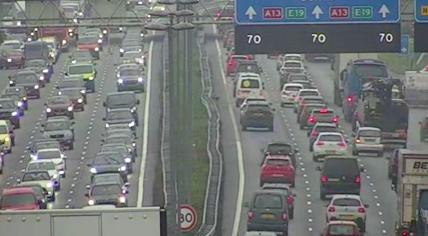
Dutch roads: Fifteen percent increase in traffic jams in the first half of 2023
Traffic jams have increased considerably on Dutch roads, says the ANWB based on the latest figures. The probability of traffic jams increased by 15 percent in the past six months compared to the same period in the pre-coronavirus year 2019, with daily congestion returning immediately after the withdrawal of the last coronavirus measures at the end of March last year, the ANWB said.
According to the ANWB, daily monitoring of traffic flow on Dutch roads shows that the effect of working from home and traveling outside rush hours is barely visible. Both during rush hour and during the day, the risk of congestion has increased again sharply in the last six months. The number of traffic jams during the morning rush hour rose by 13 percent and in the evening rush hour by nine percent.
The traffic jam problem is also occurring in more regions. In the provinces of Utrecht and Gelderland, the risk of congestion increased by 9 and 10 percent, respectively. In Noord-Holland and Zuid-Holland, congestion increased by 16 and 14 percent, respectively. The ANWB calls the increase in traffic jams in Noord-Brabant "remarkable". "In this province with many transit routes, the number of traffic jams increased by 36 percent." Transit traffic is traffic that transports goods and people from one country to another.
The busiest rush hour in the past six months was on Thursday, April 6, ANWB reported. The always-busy Thursday afternoon before Easter caused a record 1491 kilometers of rush hour traffic this year, partly thanks to persistent rainfall.
Reporting by ANP
